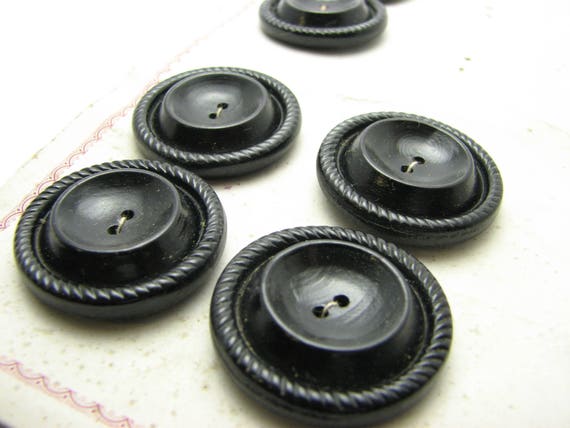The second world war was a difficult time in Europe. Although Spain was not directly involved in it (apart from some help sent to the Nazi Germany), it was no different there, as there had been a terrible civil war, which had just finished in 1939.
Along with the atrocoities came hunger and scarcity. The former moved people from cities to the countryside, where they could at least access the basic produce, and the latter was caused both by insufficiennt resources, but also by the fact that most commodities were reserved for the military use. This was the fate of the plastic, whose use was restricted for civillians.
The alternatives provided by the button manufacturers were metal and wood. However, plastic had already made it to the haberdasheries and now it was difficult to convince people to buy cheaper and more mundane materials, so the buttons were usually covered in a thick layer of paint in vivid colours, just to make them look like plastic.
 |
These blue buttons look as if made of plastic. They have a nice art deco pattern.
But take a look at the photo below, showing the back of the button. We can see they are made of metal over a wooden base.
Machine washing could destroy them altogether! |
 |
| These buttons also look as if made of plastic, but this time they are made of wood. |
The paper card on which the buttons were sold had to be cheaper as well. In 1930s the cards had been beautifully decorated, and very ofte made from expensive cardboard. Now they had to be made of recycled paper, unbleached, and with no or minimum decoration (it came back in 1950s).
 |
| This button card is made of unbleached paper. |
 |
| These buttons are large, but they are made of bad quality wood. They look nice from the top, tough. |
|
The times were difficult and the resources scarce, but this makes it easier to date the buttons. Once the war was over, plastic took over the button market for good.







No comments:
Post a Comment